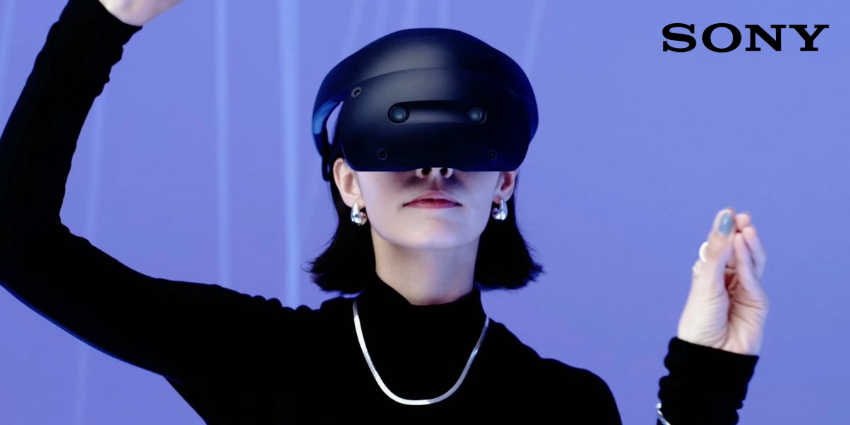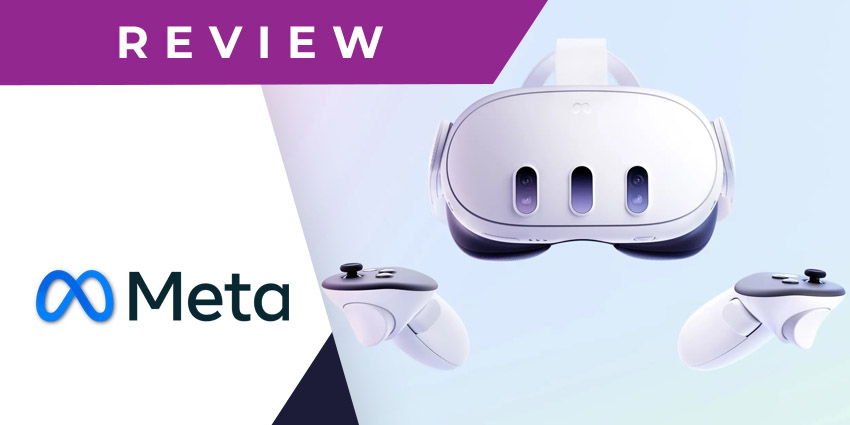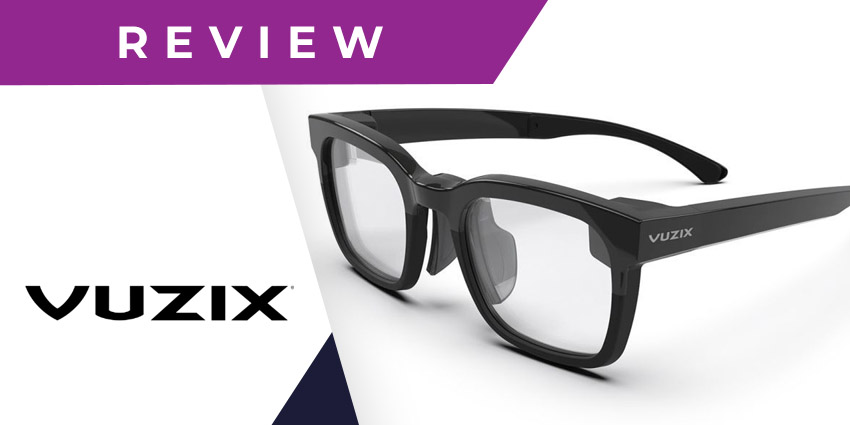When HTC VIVE started teasing the HTC VIVE Flow way back in 2021, it left some consumers a little confused. The virtual reality “glasses” looked nothing like the headsets we were already familiar with from vendors like Meta. They were also a world apart in functionality from other simple but effective VR solutions, like the VIVE Focus 3.
Still, they managed to earn a decent amount of attention. They were named the “best wearable tech” at the Esquire Gadget Awards in 2021. Plus, they addressed a common problem emerging in the growing extended reality landscape: comfort.
In 2024, as competing vendors roll out heavier and bulkier systems like the Apple Vision Pro, demand for lightweight and ergonomic headsets is beginning to increase. With that in mind, we decided to take a closer look at the HTC VIVE Flow to see whether it still holds up in the VR market.
HTC VIVE Flow Quick Verdict, Pros and Cons
The HTC VIVE Flow headset delivers on its promise to provide users with a comfortable, lightweight, and portable virtual reality experience. The device seems a decent option for businesses with smaller budgets or teams looking to share a single, simple VR device.
However, in our experience, the VIVE Flow headset’s features don’t validate its price tag. The product is much more expensive than the more capable and powerful Meta Quest 2, and it’s almost the same price as the Meta Quest 3. This headset might be a tough sell for some enterprise users.
Pros:
- Decent visuals (3200×1600 pixels combined)
- Lightweight and comfortable design
- Spatial audio support
- Hot swapping battery for long-term use
- Video pass-through available
- 6DoF tracking
Cons:
- Requires an external power source
- Limited software options
HTC VIVE Flow review: Overview and Specs
The HTC VIVE Flow is one of the cheapest and simplest headsets available from the XR brand. It acts as a lightweight, budget-friendly, and pared-down alternative to options like the VIVE XR Elite for true beginners in the extended reality space.
Clearly, VIVE was keen to differentiate itself from bulkier, complex headsets, often responsible for causing VR sickness, when building the HTC Flow. However, the limited functionality of the wearable does make it feel more like an “early generation” headset than a future-facing device.
Notably, however, VIVE has upgraded the Flow’s software over the years since its release to deliver better tracking capabilities and immersion.
Let’s take a quick look at the specs:
| Phone compatibility | Android and iOS |
| Form factor | Lightweight, foldable VR glasses |
| Storage & Memory | 64GB ROM and 4GB RAM |
| Weight | 189 grams |
| Resolution | 3200×1600 pixels combined |
| Field of view | Up to 100 degrees |
| Refresh rate | 75 Hz |
| Audio | Stereo speakers with spatial audio |
| Power | External battery (hot-swappable) |
| Tracking | Two cameras for inside-out 6DoF tracking |
HTC VIVE Flow Availability and Pricing
Since launching in 2021, HTC VIVE hasn’t made many changes to the pricing for its Flow headset. That’s a little unusual when you consider other major vendors like Meta regularly reducing the prices of their older kits when new solutions are released.
The Flow, available in regions worldwide, costs $499, which makes it a lot less expensive than many of the high-end devices on the market today. But if you’re looking for a cheap virtual reality headset, this device doesn’t really offer the best value for money.
It might be more comfortable and lightweight than the similarly priced Meta Quest 3, but it underperforms in virtually every other area, from visual quality to tracking capabilities. Even cheaper headsets, like the Quest 2, and the HP Reverb G2 are more advanced.
HTC VIVE Flow Review: Design and Comfort
The HTC VIVE Flow headset doesn’t really feel like a VR headset at all. VIVE markets it as a set of “immersive glasses”, similar to a very chunky set of sunglasses, with VR capabilities. Weighing only 189 grams (without the power cable), the headset is definitely lightweight, making it a great option for avoiding neck strain. Plus, since the glasses are “foldable,” they’re very easy to transport.
While the headset doesn’t look particularly attractive compared to some of the other futuristic options on the market today, it’s not too ugly either. What really makes these glasses stand out is how comfortable they are to wear. It’s not just the reduced weight that improves the experience. The soft-touch face gasket is also excellent for providing extra padding.
There are a few awkward components, such as the rigid arms that hold the glasses onto your head (in place of a standard strap). These can place a lot of pressure on the back of your head after a while. Plus, the fact that this isn’t a standalone headset means you are going to have a USB-C cable running down the back of your head to connect to a power source.
One thing we really appreciate about this VR headset, is how it supports people with prescription glasses. The solution comes with an intuitive focus system and a wide manual focus range that you can adjust according to your specific needs.
Display, Visuals, and Performance
The display for the HTC VIVE Flow isn’t the most advanced we’ve seen, but it’s good enough for those in search of an affordable immersive experience. You get a 3.2k resolution overall, evening out at around 1.6k per eye, slightly less than you’d get from the Meta Quest 2.
After reviewing products like the Pimax Crystal and even the Meta Quest 3, we will say the visual clarity leaves something to be desired. The colors are vivid and bright, and the refresh rate is decent, at up to 75Hz, but there’s definitely room for improvement.
On the plus side, you get a field of view of up to 100 degrees and the option to access virtual reality content in two different ways. You can either connect your system to the “Viverse”, through a Viveport Infinity membership, or connect your smartphone to your headset.
Compared to the Meta Quest store and similar solutions, there aren’t quite as many unique apps to choose from for the Flow in the Viverse. Most of the apps you’ll find are designed for things like meditation and relaxation rather than productivity. Plus, the aging Snapdragon XR1 chipset in the device means your system will struggle to contend with any truly demanding apps.
Ultimately, the VIVE Flow seems more attuned to smartphone mirroring, similar to many early-stage AR headsets. Using Miracast technology, the system allows you to access a variety of apps and interact with your smartphone while navigating VR.
Virtually any app you can access on your phone is available for the HTC VIVE Flow, including options like Microsoft Teams. But since there’s no option to connect to a laptop, keyboard, and similar tools, you’ll have a hard time creating a full “immersive work” experience with this system.
Controllers and Tracking
You may have noticed we haven’t mentioned the controllers for the HTC VIVE Flow so far. That’s because there aren’t any. All of your interactions with the virtual world are powered by your smartphone. At first, the idea of going controller-free makes sense.
After all, fewer VR accessories to carry around means you get a more lightweight, portable headset. Unfortunately, using your smartphone to control everything is a bit tricky.
Once you connect your glasses to your smartphone, you’ll see a virtual controller UI on your screen. You can activate this by holding two fingers on your smartphone screen. The controller gives you a laser pointer and four buttons. Those buttons can do different things depending on the app you’re using.
The trouble is, we lost track of these buttons when wearing the VR headset. Plus, the lack of a dedicated controller means the system can only use the phone’s gyroscope to track its position, which detracts from the immersive experience.
On the plus side, there are two cameras embedded in the lenses of the headset to enable positional tracking. This gives you a similar overall experience to the Quest 2, but with much less accuracy. We found the headset regularly lost its ability to track movement in certain apps, causing errors to pop up on the screen.
Of course, VIVE could always address these features with a newer version of the “Flow” glasses in the future. Offering support for VR gloves or introducing spatial computing capabilities, more cameras, and stronger tracking options could make the device more competitive.
The bad news is that the company doesn’t seem to have any plans to expand the Flow in the future. It’s currently focusing on its other, more premium headsets instead.
The Final Verdict
Overall, we can definitely see the appeal of the HTC VIVE Flow. It was created at a time when VR vendors were looking for ways to combine performance with comfort.
The headset excels in key areas like comfort and portability. But it falls short almost everywhere else. As new forms of “VR” and MR glasses enter the market, from Apple, Samsung, and even Meta, the HTC VIVE Flow may become obsolete.
Even now, we’d recommend looking at the latest Meta Quest headset if you’re looking for an ergonomic experience with more in-depth immersion. While the VIVE Flow definitely offers a good entry-level experience for VR, it simply can’t compete in the modern market.








